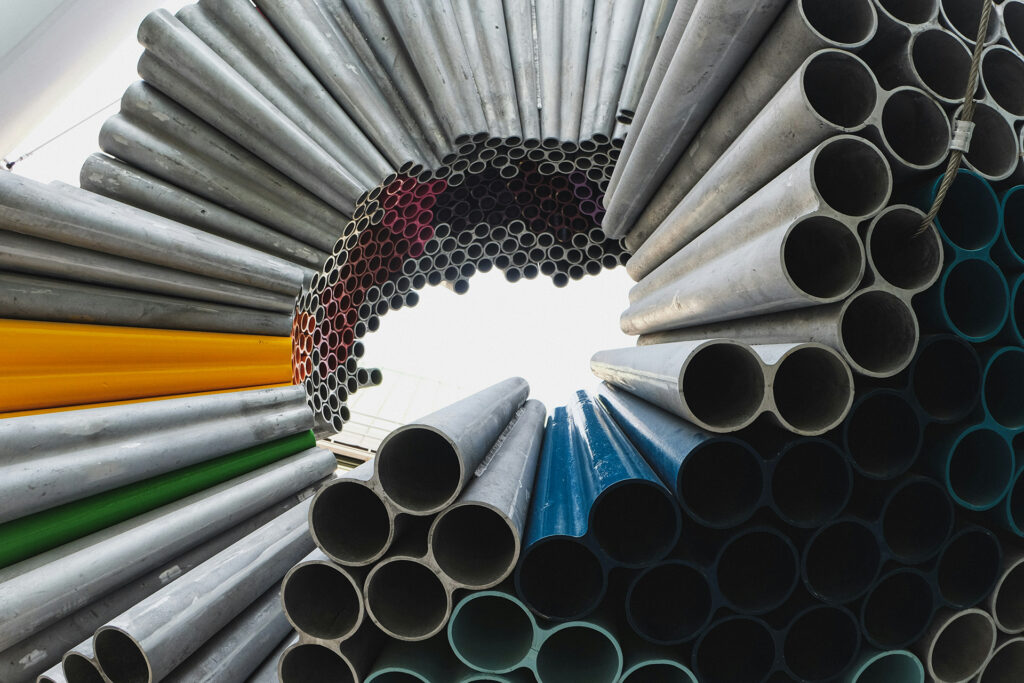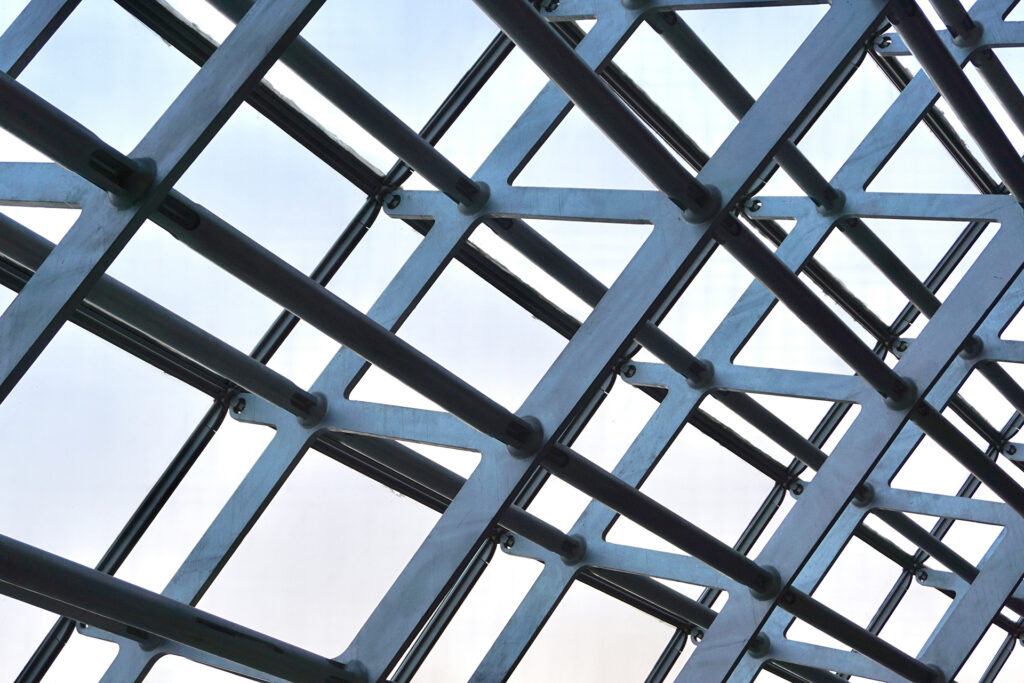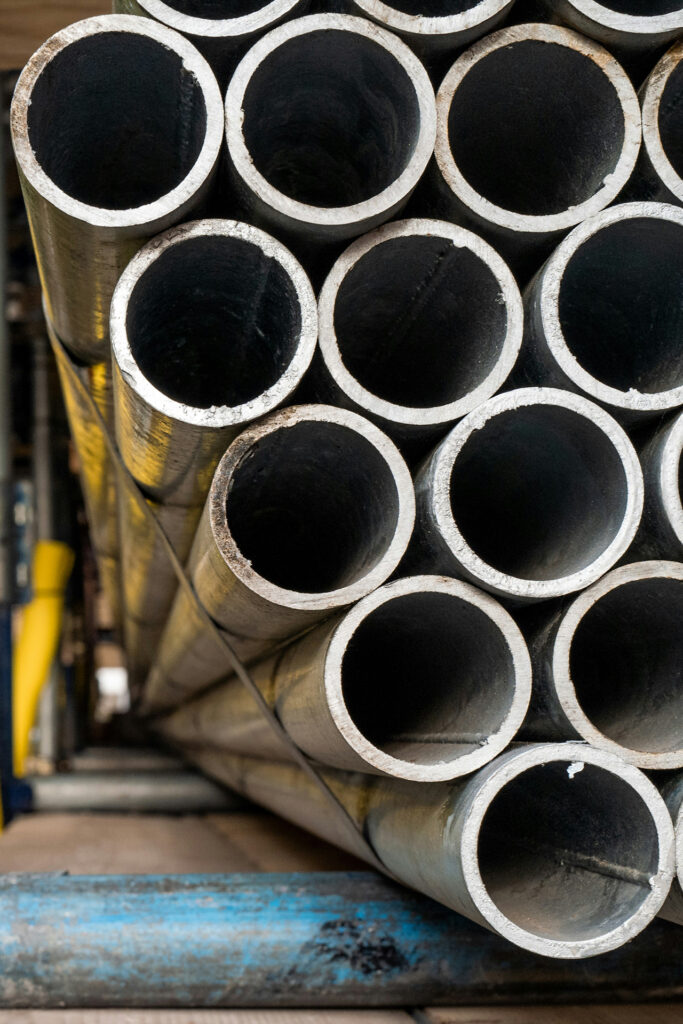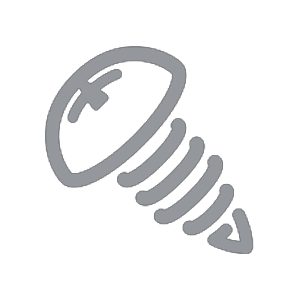Functional Treatments
Pickling
Functional Treatments
Pickling
Functional treatments: pickling
Material pickling is an industrial process aimed at removing unwanted surface layers from materials such as metals and wood in order to improve the aesthetic appearance and prepare the surface for further processing . It is a fundamental process for cleaning and preparing various materials such as Iron, Aluminum and Brass/Copper. Using chemical or electrolytic methods, oxides and scale are removed, improving the aesthetic and functional properties of treated materials.
What is pickling
Pickling is a procedure of removing oxides and scale through chemical or electrolytic processes. Commonly used on materials such as Iron, Aluminum, and Brass/Copper, this process can be applied on a large scale for small parts or larger objects such as industrial frames.
What It's for
the Pickling
Pickling plays several roles, including removing contaminants and oxides from the surface of materials. This operation is essential to prepare materials before painting, welding or other surface treatments . It also contributes to improving aesthetic appearance by ensuring a clean surface free of impurities. One of the most common areas where pickling is applied is in metalworking. Metals such as iron, steel, aluminum, and brass often show oxidation, scale, or residue from previous processing. Metal pickling focuses on removing these surface layers to reveal the clean surface of the underlying metal.
The process may involve the use of specialized acids or alkaline solutions that work on corrosion, ridding the metal of oxides and contaminants. This not only improves the appearance, but can also prevent future corrosion, prolonging the life of the material.
What the pickling wash is for
Pickling washing is a step following pickling, aimed at removing residues of chemicals used in the process. This ensures that the treated surface is completely clean and ready for subsequent treatments.
What is pickling for metals
Metal Pickling uses acids or alkaline solutions to remove oxides, improve appearance, and prevent future corrosion. Methods: acid, gel or sandblasting.
What materials can be subjected to pickling
The most common materials that can be treated with pickling are metals, such as iron, steel, aluminum, and brass, as well as wood used in furniture and artifacts.
How metal pickling works
Metal pickling may involve the use of specialized acids or alkaline solutions that act on corrosion, removing oxides and contaminants to improve appearance and prevent future corrosion. It can be performed by several approaches, including the use of specific chemical pickling agents, pickling gels, or mechanical methods such as sandblasting .
How to apply pickling to various types of metals
Let’s look specifically at how to apply it on various types of metal:
How does the process take place?
The oxide that is formed is not due to material input but to a transformation of the original surface of the object. The aluminum surface undergoing anodizing is progressively oxidized from the outside of the surface progressing inward. The ‘oxide that is formed has a larger volume than the original metal (aluminum) so that apparently, from a dimensional point of view, it seems away is a material contribution, in reality the thickness of oxide partly “penetrates” into the metal partly “grows” outward. In practice for a thickness of e.g. 10 microns, 5 microns penetrated and 5 microns expanded so the geometric increase amounts to 5 microns. Note that, on a diameter, the 10-micron thickness produces an increase in diameter of 10 microns, not 20.
Oxide also tends to form fairly uniformly in recesses, undercuts, and inside pipes. The structure of the oxide is very similar to the “honeycomb” structure with vertical tubules with respect to the thickness formed. These tubules are much less than a micron in diameter, but particular dyes can penetrate them, being able to impart a wide variety of colorations to the oxide layer. Following the formation of the oxide layer and, eventual staining, a pore-closing operation is performed in order to ensure compactness and corrosion resistance. This operation is called fixing and can be done cold or hot. in any case, the pores are closed; however, it turns out to be safer to heat fix especially for colored oxide layers.
Pickling materials: what to know
Pickling of materials is an industrial process aimed at removing unwanted surface layers from materials such as metals and wood, in order to improve the aesthetic appearance and prepare the surface for further processing. It is a fundamental process for cleaning and preparation of various materials such as Iron, Aluminum and Brass/Copper. Using chemical or electrolytic methods, oxides and scale are removed, improving the aesthetic and functional properties of treated materials.


What is pickling
Pickling is a procedure of removing oxides and scale through chemical or electrolytic processes. Commonly used on materials such as Iron, Aluminum, and Brass/Copper, this process can be applied on a large scale for small parts or larger objects such as industrial frames.
What pickling is used for
Pickling plays several roles, including removing contaminants and oxides from the surface of materials. This operation is essential to prepare materials before painting, welding or other surface treatments . It also contributes to improving aesthetic appearance by ensuring a clean surface free of impurities. One of the most common areas where pickling is applied is in metalworking. Metals such as iron, steel, aluminum, and brass often show oxidation, scale, or residue from previous processing. Metal pickling focuses on removing these surface layers to reveal the clean surface of the underlying metal.
The process may involve the use of specialized acids or alkaline solutions that work on corrosion, ridding the metal of oxides and contaminants. This not only improves the appearance, but can also prevent future corrosion, prolonging the life of the material.
CONTACT US!
What is pickling for metals
Metal Pickling uses acids or alkaline solutions to remove oxides, improve appearance, and prevent future corrosion. Methods: acid, gel or sandblasting.
What materials can be subjected to pickling
The most common materials that can be treated with pickling are metals, such as iron, steel, aluminum, and brass, as well as wood used in furniture and artifacts.
How metal pickling works
Metal pickling may involve the use of specialized acids or alkaline solutions that act on corrosion, removing oxides and contaminants to improve appearance and prevent future corrosion. It can be performed by several approaches, including the use of specific chemical pickling agents, pickling gels, or mechanical methods such as sandblasting.
How does the process take place?
The oxide that is formed is not due to material input but to a transformation of the original surface of the object. The aluminum surface undergoing anodizing is progressively oxidized from the outside of the surface progressing inward. The ‘oxide that is formed has a larger volume than the original metal (aluminum) so that apparently, from a dimensional point of view, it seems away is a material contribution, in reality the thickness of oxide partly “penetrates” into the metal partly “grows” outward. In practice for a thickness of e.g. 10 microns, 5 microns penetrated and 5 microns expanded so the geometric increase amounts to 5 microns. Note that, on a diameter, the 10-micron thickness produces an increase in diameter of 10 microns, not 20.
Oxide also tends to form fairly uniformly in recesses, undercuts, and inside pipes. The structure of the oxide is very similar to the “honeycomb” structure with vertical tubules with respect to the thickness formed. These tubules are much less than a micron in diameter, but particular dyes can penetrate them, being able to impart a wide variety of colorations to the oxide layer. Following the formation of the oxide layer and, eventual staining, a pore-closing operation is performed in order to ensure compactness and corrosion resistance. This operation is called fixing and can be done cold or hot. in any case, the pores are closed; however, it turns out to be safer to heat fix especially for colored oxide layers.
How to apply pickling to various types of metals
Let’s look specifically at how to apply it on various types of metal:
Brass Pickling
For brass, it is recommended to use specific pickling agents that will not damage the alloy,
requires, in fact, a specific approach because of its composition as an alloy of copper and zinc.Brass is susceptible to oxidation and scaling that can compromise its luster and durability over time. Therefore, it is recommended that specially formulated pickling agents be used to treat brass without damaging the alloy.
Brass pickling agents often contain chemicals designed to react with oxides on the surface of brass, making them easier to remove. It is essential to use chemicals that are gentle on brass, avoiding those that could cause corrosion or damage the composition of the alloy.
The brass pickling process can be used in a variety of applications, both industrial and DIY. This treatment is particularly useful for restoring the shine of brass on items such as handles, lamps, kitchen utensils, and other furniture or everyday objects that are subject to oxidation over time.
For brass, it is recommended to use specific pickling agents that will not damage the alloy,
requires, in fact, a specific approach because of its composition as an alloy of copper and zinc.Brass is susceptible to oxidation and scaling that can compromise its luster and durability over time. Therefore, the use of pickling agents specially formulated to treat brass without damaging the alloy is recommended.
Brass pickling agents often contain chemicals designed to react with oxides on the surface of brass, making them easier to remove. It is essential to use chemicals that are gentle on brass, avoiding those that could cause corrosion or damage the composition of the alloy.
The brass pickling process can be used in a variety of applications, both industrial and DIY. This treatment is particularly useful for restoring the shine of brass on items such as handles, lamps, kitchen utensils, and other furniture or everyday objects that are subject to oxidation over time.
Copper Pickling
Pickling copper is a process similar to pickling iron, but with some differences due to the specific chemical properties of copper. Copper responds positively to chemical pickling, which removes oxides and surface impurities from it. This process is critical for removing oxidation and impurities from the surface of copper, helping to improve the conductivity and aesthetic appearance of the metal.
In chemical pickling of copper, specific pickling agents are used that work to dissolve oxides on the surface of the metal. These pickling agents contain chemicals designed to react with copper oxides, facilitating their removal.
The copper pickling process is also used in various contexts, including industrial sectors and DIY applications. It can be used to handle small components, such as electrical cables or pipes, as well as larger objects such as architectural ornamentation or plumbing fixtures.
It is important to note that, for both metals, pickling not only improves the aesthetic appearance but also helps preserve their strength and durability by removing corrosive substances that could compromise the structural properties of the material over time.
Pickling copper is a process similar to pickling iron, but with some differences due to the specific chemical properties of copper. Copper responds positively to chemical pickling, which removes oxides and surface impurities from it. This process is critical for removing oxidation and impurities from the surface of copper, helping to improve the conductivity and aesthetic appearance of the metal.
In chemical pickling of copper, specific pickling agents are used that work to dissolve oxides on the surface of the metal. These pickling agents contain chemicals designed to react with copper oxides, facilitating their removal.
The copper pickling process is also used in various contexts, including industrial sectors and DIY applications. It can be used to handle small components, such as electrical cables or pipes, as well as larger objects such as architectural ornamentation or plumbing fixtures.
It is important to note that, for both metals, pickling not only improves the aesthetic appearance but also helps preserve their strength and durability by removing corrosive substances that could compromise the structural properties of the material over time.
Do you need help?

Iron Pickling
Iron pickling can be done by using metal-specific pickling agents or by sandblasting. This process is essential to remove oxides and scale from the surface of iron, improving its strength and appearance.
Iron pickling finds use in industrial and DIY sectors, providing optimal results on small components or larger objects such as frames.

Pickling Aluminum
Aluminum pickling is a process aimed at removing oxides and contaminants from the surface of this lightweight metal. The presence of oxides may impair the adhesion of subsequent coatings or affect the aesthetic appearance of aluminum. Two common methods of performing aluminum pickling are the use of specific pickling agents and sandblasting.
Chemical pickling of aluminum
- Aluminum-specific pickling agents contain chemicals designed to react with oxides on the metal surface, facilitating their removal.
- These pickling agents act chemically by dissolving oxides without damaging the underlying aluminum.
- It is important to select pickling agents that are specially formulated for aluminum to avoid surface damage.
Aluminum sandblasting
- Blasting is a mechanical method involving the use of abrasive particles, such as sand or glass beads, to remove surface layers of oxides and contaminants from aluminum.
- Sandblasting can be an effective option for removing dirt, paint, or other solid residues on the surface of aluminum.
- However, it is essential to control the intensity of blasting to avoid excessive damage or deformation to the aluminum surface.
Both chemical pickling and sandblasting are used in various industries, including manufacturing and the automotive industry, where preparation of the aluminum surface is crucial to achieve high-quality results in subsequent treatments, such as painting or corrosion protection.
Aluminum pickling is a process aimed at removing oxides and contaminants from the surface of this light metal. The presence of oxides may impair the adhesion of subsequent coatings or affect the aesthetic appearance of aluminum. Two common methods of performing aluminum pickling are the use of specific pickling agents and sandblasting.
Chemical pickling of aluminum
- Aluminum-specific pickling agents contain chemicals designed to react with oxides on the metal surface, facilitating their removal.
- These pickling agents act chemically by dissolving oxides without damaging the underlying aluminum.
- It is important to select pickling agents that are specially formulated for aluminum to avoid surface damage.
Aluminum sandblasting
- Blasting is a mechanical method involving the use of abrasive particles, such as sand or glass beads, to remove surface layers of oxides and contaminants from aluminum.
- Sandblasting can be an effective option for removing dirt, paint, or other solid residues on the surface of aluminum.
- However, it is essential to control the intensity of blasting to avoid excessive damage or deformation to the aluminum surface.
Both chemical pickling and sandblasting are used in various industries, including manufacturing and the automotive industry, where preparation of the aluminum surface is crucial to achieve high-quality results in subsequent treatments, such as painting or corrosion protection.
Steel Pickling
Pickling steel is a common practice to remove oxides, scale, and other surface impurities that can compromise the quality and strength of the metal. This process is widely used in various industrial applications, such as in surface preparation prior to painting or galvanizing, and in the DIY industry.
Steel pickling methods may include the use of specific chemical pickling agents or blasting, depending on the needs and characteristics of the job.
Stainless Steel Pickling
Stainless steel requires a specific approach to pickling. The choice of pickling agents and methods must consider the composition of the stainless steel to avoid damage to the alloy.
Stainless steel, in fact, because of its composition, which includes chromium, nickel and other alloying elements that impart corrosion resistance and a shiny surface. Using pickling agents or inappropriate methods can damage the alloy and impair the properties of stainless steel. When pickling stainless steel, it is essential to consider the following:
● Specific pickling agents
Pickling agents specially formulated for stainless steel must be used.
These pickling agents are designed to remove oxides without damaging the surface of stainless steel.
● Avoiding contamination
During the pickling process, it is important to avoid contamination by tools or equipment that may contain abrasive particles or harmful substances.
● Corrosion control
After pickling, it is advisable to take additional measures to control corrosion, as stainless steel may be temporarily more susceptible to this phenomenon.
● Protection of sensitive surfaces
If stainless steel has sensitive or polished surfaces, it is important to protect them during the pickling process to preserve their aesthetic appearance.
In summary, steel and stainless steel pickling requires careful consideration of the materials and methods used to ensure effective results without compromising the quality and strength of the treated metals.
do you need help?
Pickling of Welds
Pickling of welds is critical to ensure a strong and durable connection. This process removes weld residue and makes the surface ready for further treatment.Weld pickling is a crucial step in the processing of welded joints. This process aims to remove weld residue, such as oxides, slag or other contaminants, from the weld surface to ensure a strong and durable connection. Pickling is essential to prepare the surface so that it can be later treated, such as by painting or applying protective coatings.
Here are some important aspects related to weld pickling
● Removal of oxides and contaminants.
During the welding process, oxides and other impurities can form on the surface of the joint.
Pickling aims to remove these residues, ensuring a clean surface free of contaminants.
● Improved adherence
Removal of welding residues
promotes better bonding with subsequent coatings or other materials
, improving theadhesion and overalldurability of the connection.
● Pickling methods
Pickling of welds can be done by the use of specific chemical pickling agents or by mechanical processes such as brushing or sandblasting.
The choice of method depends on the type of material being welded and the specific needs of the project.
● Welding protection
After pickling, it is advisable to protect the weld from further oxidation or contamination during subsequent stages of the production process.
● Corrosion control
If the welded joint is intended to be exposed to the elements, it is important to take measures to prevent corrosion, such as through the application of anticorrosive coatings.
In summary, weld pickling is a critical practice to ensure the quality and durability of welded connections, preparing the surface for subsequent treatments and improving the overall performance of the welded structure or component.

Application areas of material pickling
It finds wide application in various industries, including small parts and frames. Here is how pickling can be used in these specific contexts:
Minutery
1. Mechanical Components
In the area of small parts, as in the area of mechanical components, pickling can be used to prepare small metal surfaces, such as bolts, screws, washers and other fasteners. Thorough cleaning of surfaces improves the effectiveness of the connection and can affect the strength of the small parts.
2. Objects of Precision
Precision components, such as those used in watchmaking or the electronics industry, can undergo pickling to ensure that surfaces are free of contaminants and ready for further treatment or assembly.
Frames
1. Metal Structures
In the frame industry, which can include vehicle frames, building structures or industrial machinery frames, pickling is used to remove any oxides or impurities from the surface of steel or other metal alloys. This ensures the strength and durability of the structure.
2. Coating and Painting
Before applying coatings or paints, pickling is often necessary to ensure that the surface is clean and free of substances that could compromise the adhesion of coating materials.
3. Repairs and Maintenance
In the case of existing frames requiring maintenance or repair, pickling can beused to remove corrosion or old coatings, preparing the surface for corrective work.
The use of pickling in these areas helps to improve the quality of materials and structures, positively affecting the strength, aesthetic appearance, and durability of components. It is important to tailor the pickling process to the specific needs of the materials and applications in each industry.
The perfect pickling with Tobaldini: Expertise in the surface preparation industry
Tobaldini is a
company specializing
in industrial pickling, providing high-quality services for the preparation of metal surfaces in the small parts and frames sectors. With state-of-the-art equipment and specific chemical pickling agents, the company ensures optimal results without compromising the integrity of materials. Tobaldini stands out for its tailored approach to customer needs, using advanced technologies and sustainable practices to reduce environmental impact. With an experienced and customer-oriented team, Tobaldini is a reliable choice for improving performance and durability of metallic materials.
Treatable materials
- Carbon steel
- Iron
- Stainless steel
- Copper
- Brass
- Aluminum
Regulations
- UNI ISO 6158
- UNI 5082
Possible finishes
- White passivation (chrome 3)
- High strength passivation (chrome 3)
- Black passivation (chrome 3)
Maximum treatable size
2700x500x1200 mm
Treatable materials
- Iron
- Copper
- Brass
- Aluminum
Possible finishes
- White passivation (chrome 3)
- High strength passivation (chrome 3)
- Black passivation (chrome 3)
Regulations
- UNI ISO 6158
- UNI 5082
Maximum treatable size
2700x500x1200 mm
Sectors
implementing
implementing
Application areas

Minutery

Mechanics

Earthmoving

Food

Tools

Paint or printing rollers

Earthmoving

